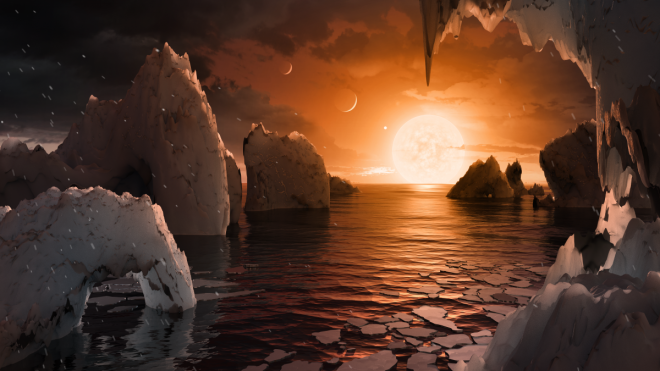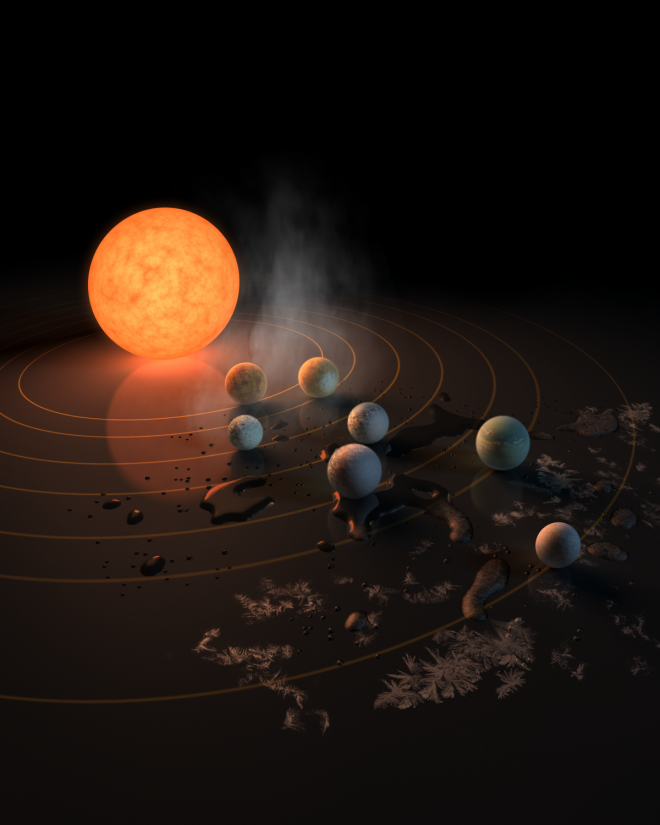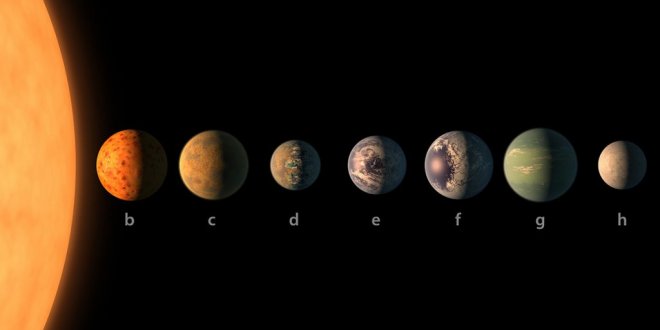In a major breakthrough, NASA has released a statement saying that scientists have spotted seven earth-sized planets, orbiting around a star just 40 light-years away from our solar system. What is more astonishing is that experts are saying some or all of them could harbor water and possibly life.

This is the first time that NASA's Spitzer Space Telescope has revealed the first known system of seven medium-sized planets around a single star. These rocky planets orbit an ultra-cool dwarf star called the TRAPPIST-1 in the constellation Aquarius, which is 10 times smaller and 2.5 times cooler than our sun.
Three of these planets may indeed have signs of life, as they are "firmly located in the habitable zone, the area around the parent star where a rocky planet is most likely to have liquid water," said NASA.
"The discovery sets a new record for greatest number of habitable-zone planets found around a single star outside our solar system. All of these seven planets could have liquid water – key to life as we know it – under the right atmospheric conditions, but the chances are highest with the three in the habitable zone."

According toThomas Zurbuchen, associate administrator for the agency's Science Mission Directorate in Washington, this is a huge step forward toward the goal of finding habitable environments and places in the deep space that are favorable to life. He also says that finding so many planets that can sustain life, for the first time, can take us closer to answering the age-old question, "are we alone?".

The new discovery is not fascinating only because there is a possibility of finding alien life, but also because TRAPPIST-1 will provide planetary scientists with an unprecedented new window on the formation of solar systems and the behavior of rocky worlds.
Dishing out more information about these seven planets around the TRAPPIST-1, scientists says that they don't have days and nights. The astronomers believe that because the planets are close to the sun and to one another, they are "tidally locked." This is what happens when the amount of time it takes a body to orbit matches the length of one rotation on its axis. The result is that the same side of the body always faces the object it orbits around. The moon is tidally locked with Earth, which is why we always see the same face of our satellite when we look up at night. For the planets of the TRAPPIST-1 system, this means that one side of each body is constantly blasted with their sun's heat, while the other sides are perpetually in darkness, which could create huge temperature gradients that drive powerful winds.
"This is the most exciting result I have seen in the 14 years of Spitzer operations," said Sean Carey, manager of NASA's Spitzer Science Center at Caltech/IPAC in Pasadena, California. "Spitzer will follow up in the fall to further refine our understanding of these planets so that the James Webb Space Telescope can follow up. More observations of the system are sure to reveal more secrets."
Following up on the Spitzer discovery, NASA's Hubble Space Telescope has initiated the screening of four of the planets, including the three inside the habitable zone. These observations aim at assessing the presence of puffy, hydrogen-dominated atmospheres, typical for gaseous worlds like Neptune, around these planets.
"This is the most exciting result I have seen in the 14 years of Spitzer operations," said Sean Carey, manager of NASA's Spitzer Science Center at Caltech/IPAC in Pasadena, California. "Spitzer will follow up in the fall to further refine our understanding of these planets so that the James Webb Space Telescope can follow up. More observations of the system are sure to reveal more secrets."








